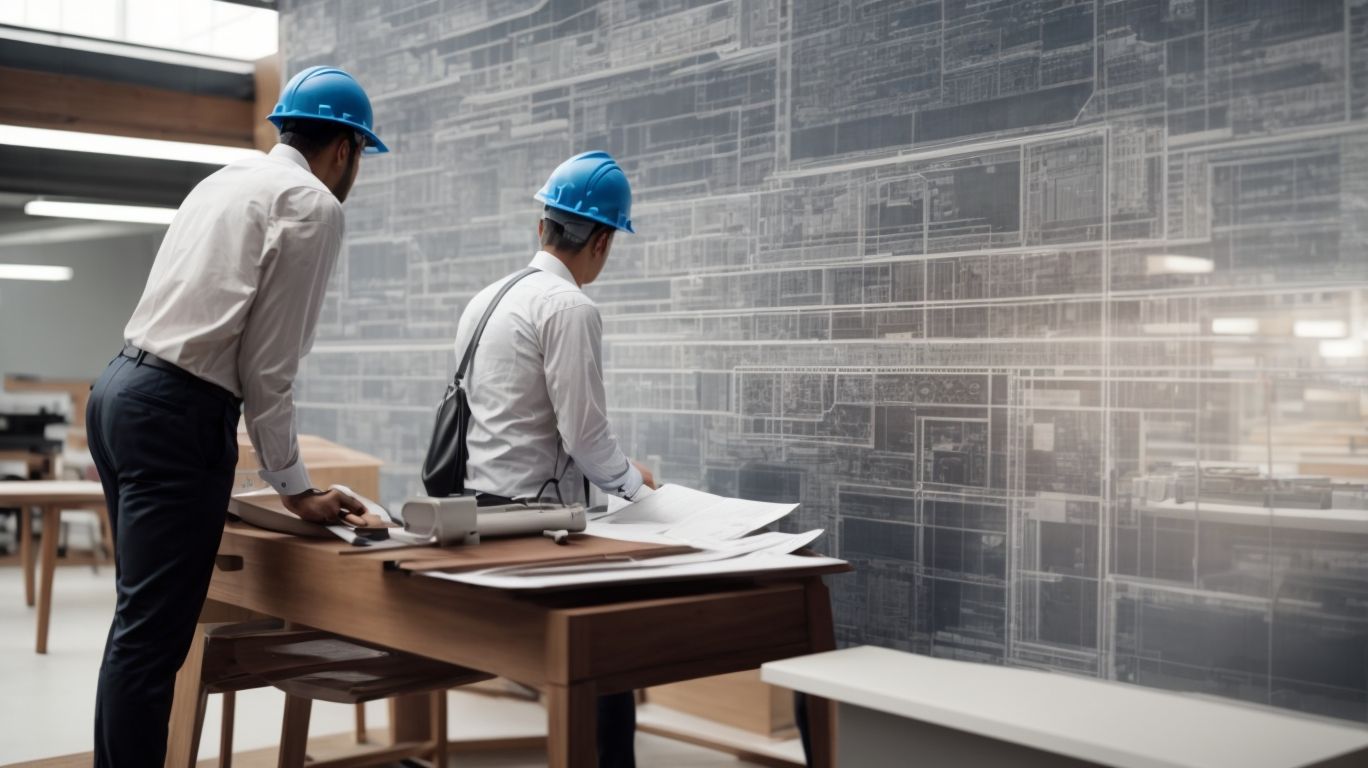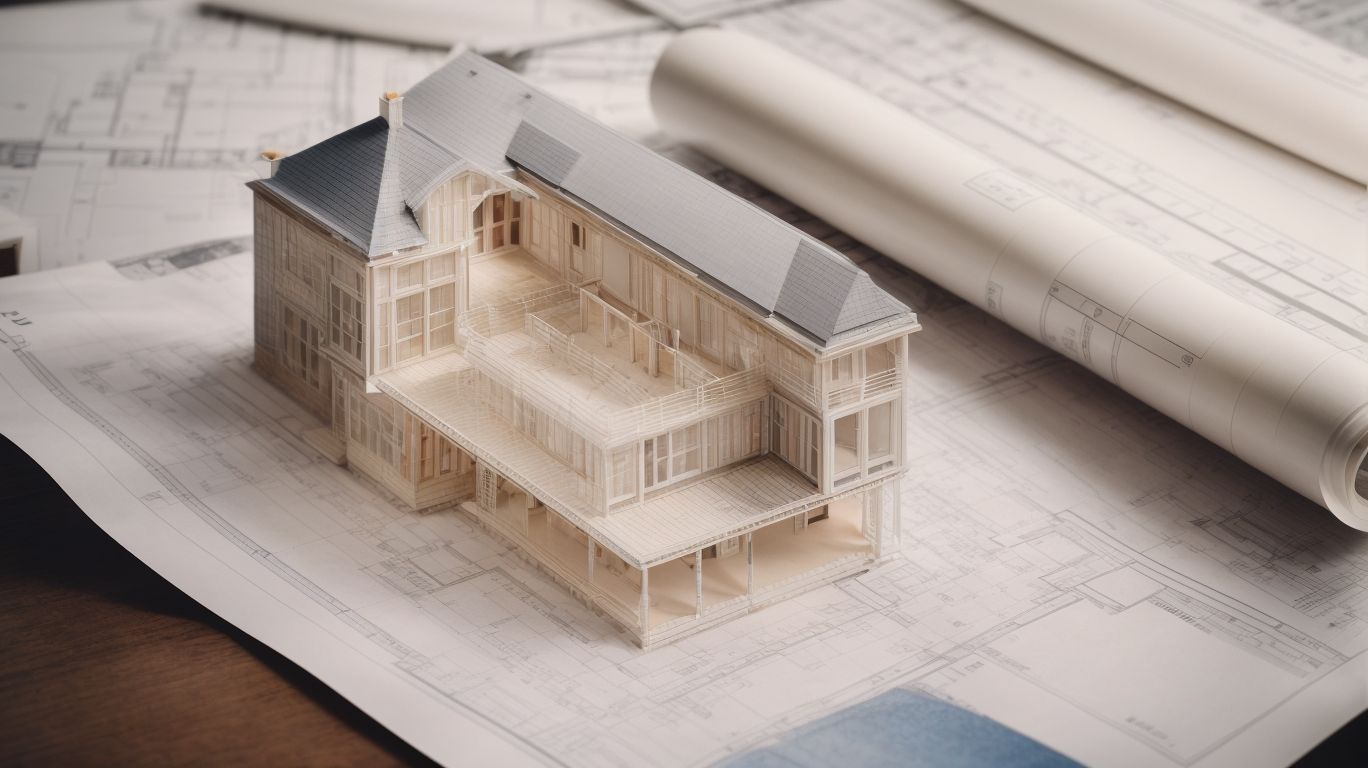
Transformative Home Design: Structural Engineers as Creative Partners
Are you considering a transformative home design project? Collaborating with a structural engineer can enhance your vision, ensuring unique structural elements, maximizing space and functionality, and incorporating sustainable features.
But how do you find the right creative partner for your project? In this article, we will explore the benefits of working with a structural engineer, the steps involved in collaboration, and how to find a reliable and creative professional for your home design project.
Whether you are remodeling, building an addition, or designing a new home, a structural engineer can be an essential part of your design team.
What Is Transformative Home Design?
Transformative home design involves the innovative and strategic enhancement of residential spaces through renovation, customization, and creative problem-solving to achieve a harmonious blend of aesthetics, functionality, and sustainability.
At its core, design is about creating spaces that are both visually stunning and functional for those who live in them. This can be achieved through the use of sustainable materials, energy-efficient technologies, and well-thought-out layouts that make the most of available space.
Transformative design goes beyond the basics and takes into account the individual lifestyle and preferences of the homeowners. By incorporating cutting-edge concepts with timeless principles, these designs aim to not only enhance the lives of those who live in them, but also have a positive impact on the environment.
Why Should You Work With a Structural Engineer for Home Design?
Collaborating with a structural engineer for home design is crucial to ensure compliance with building codes, maintain structural integrity, address renovation challenges, and implement innovative design and construction practices within the ever-evolving construction industry.
This partnership helps to guarantee that the structural elements of your home meet the necessary safety standards and regulations.
By working hand in hand with a structural engineer, you can also navigate through any potential obstacles that may arise during the renovation process, ensuring that innovative design concepts can be successfully integrated without compromising the building’s stability.
In the dynamic field of construction, embracing advanced techniques and materials with the insights of a structural engineer can lead to more durable and sustainable structures that stand the test of time.
What Are the Benefits of Collaborating with a Structural Engineer?
Collaborating with a structural engineer offers numerous benefits, including expertise in the design process, ensuring compliance with building codes, addressing structural integrity, resolving renovation challenges, and implementing innovative design solutions for enhanced building aesthetics and performance.
Their expert knowledge in structural design and analysis ensures that the construction is robust and can withstand various loads and environmental factors, providing assurance of long-term stability.
Their understanding of building codes and regulations helps to navigate complex legal requirements, avoiding costly delays or rework. Through their input, renovation projects can be executed smoothly, addressing any structural obstacles and ensuring the integration of modern and durable materials in the design process.
How Can Structural Engineers Enhance Your Home Design?
Structural engineers play a pivotal role in enhancing home design by bringing innovation, technical expertise, and problem-solving capabilities to ensure structural integrity, aesthetics, functionality, and sustainability. They work closely with the project’s design vision and adhere to building codes and standards.
Their innovative approaches allow for the incorporation of modern design elements while maintaining the structural stability of a home.
Through their technical expertise, they can optimize the use of building materials to create efficient and durable structures.
Their problem-solving capabilities enable them to overcome complex challenges, such as integrating unique architectural features without compromising the overall structural soundness.
These combined efforts significantly impact the overall functionality and appeal of residential spaces, contributing to a better quality of life for homeowners.
Incorporating Unique Structural Elements
Structural engineers collaborate to incorporate unique and innovative structural elements that align with the design vision and architectural elements, showcasing their creativity in engineering and design implementation to bring construction innovation and structural integrity to the forefront.
The expertise of structural engineers goes beyond simply providing support. They are able to seamlessly integrate cutting-edge materials and technology, while also considering environmental sustainability and safety standards.
Their role involves creating a balance between functionality, aesthetics, and structural stability. This is achieved through close collaboration with architects and designers to ensure that the structural elements not only look visually stunning but also contribute to the overall success and longevity of the project.
Ensuring Structural Integrity and Safety
A critical aspect of a structural engineer’s role is to ensure the structural integrity, stability, and safety of the building. This involves thorough analysis of building systems, performance, and environmental considerations to execute projects with precision and adherence to industry standards.
Structural engineers are responsible for designing and constructing new structures, as well as evaluating existing ones to ensure they meet safety standards. They conduct thorough assessments of load-bearing capacities, potential environmental impacts, and performance under different conditions to ensure structural stability and safety.
Working closely with architects, contractors, and other professionals, structural engineers incorporate their expertise into project planning and execution. This collaboration ultimately results in the creation of durable, safe, and environmentally conscious structures.
Maximizing Space and Functionality
Structural engineers collaborate to maximize space and functionality through thoughtful spatial design, aligning with the design vision and coordinating with various building systems, materials selection, and construction methods to integrate innovation and functionality seamlessly within the project.
The expertise of engineers ensures that the architectural and structural elements work harmoniously to optimize the use of space and meet safety and regulatory standards. Factors such as load-bearing capacity, material durability, and environmental impact are carefully considered by engineers in order to achieve the project’s objectives. Their coordinated efforts result in enhanced usability and efficiency of the space, while also contributing to the sustainability and longevity of the structure.
Incorporating Sustainable and Eco-Friendly Features
Collaborating with structural engineers facilitates the incorporation of sustainable and eco-friendly features. This includes addressing renovation challenges, navigating building regulations, and implementing innovative sustainable practices. Through thoughtful material selection, design and construction innovation, and seamless project integration, these professionals play a crucial role in creating environmentally conscious spaces.
The expertise of structural engineers is essential in seamlessly integrating eco-friendly elements, such as green roofs and solar panels, into existing structures. They also play a crucial role in selecting durable, low-impact materials to ensure the longevity and sustainability of renovation projects. Additionally, structural engineers navigate building codes and regulations to ensure compliance with energy-efficient standards, promoting environmentally conscious construction. Through the use of innovative construction methods, they contribute to the creation of sustainable and resilient spaces that prioritize environmental impact and resource efficiency.
What Are the Steps Involved in Collaborating with a Structural Engineer?
The collaboration with a structural engineer involves comprehensive steps including initial consultation and assessment, conceptual and detailed design, construction, and project management, integrating technical expertise, creative problem-solving, and seamless project integration while addressing design challenges and environmental considerations.
The process starts with an initial consultation, during which the engineer evaluates the project scope and requirements. Next, the collaborative process moves into the design phases, incorporating both conceptual ideas and detailed plans that meet the structural requirements.
Throughout the construction phase, the engineer’s technical expertise and problem-solving abilities are essential in ensuring the structural integrity and safety of the project. The engineer also oversees project management, working with various stakeholders to ensure the smooth integration of design solutions into the built environment.
Initial Consultation and Assessment
The initial collaboration with a structural engineer entails a thorough consultation and assessment phase, focusing on design challenges, project coordination, and creative problem-solving to lay the foundation for the subsequent design and construction phases.
During this phase, the structural engineer works closely with the design team to understand the specific requirements and constraints of the project. Emphasis is placed on identifying any potential structural issues and developing innovative solutions to address them.
It involves a detailed review of the site conditions, existing structures, and any potential risks or limitations that might impact the construction process. By integrating relevant keywords related to design challenges, project coordination, and creative problem-solving, the collaboration aims to ensure that the structural aspects of the project align seamlessly with the overall design vision and objectives.
Conceptual Design and Planning
Collaborating on conceptual design and planning involves addressing design challenges, integrating construction techniques, and fostering project integration to lay the groundwork for the subsequent detailed design and construction phases. This phase focuses on innovative design solutions and often entails working closely with a structural engineer to ensure alignment with structural requirements.
Brainstorming and implementing innovative design solutions can enhance the overall functionality and aesthetics of the project. Additionally, the integration of sustainable and eco-friendly design approaches is a key consideration during this phase, reflecting the industry’s increasing emphasis on environmental responsibility.
The collaborative effort during this stage sets the tone for the success of the project, establishing a strong foundation for the subsequent phases of detailed design and construction.
Detailed Design and Engineering
The detailed design and engineering phase involves close collaboration with structural engineers to integrate technical expertise, design vision, and coordination, fostering construction innovation and seamless project integration to bring the design concepts to fruition with precision and creativity.
This collaboration ensures that the structural integrity of the project aligns with the design intent, optimizing the use of materials and resources.
The integration of technical expertise leads to innovative solutions that enhance the functionality and sustainability of the final structure.
The coordination between design and engineering teams streamlines the decision-making process and ensures that the project progresses smoothly, meeting both aesthetic and functional requirements.
Ultimately, this phase culminates in a well-executed design that reflects the collaborative efforts of the entire project team.
Construction and Project Management
The construction and project management phase involves collaborative efforts with structural engineers, emphasizing environmental considerations, project execution, and design creativity to integrate construction techniques, building design, and innovative design solutions seamlessly within the project.
This collaboration is essential for ensuring that the structural integrity of the building aligns with sustainable practices, reducing its environmental impact.
The structural engineer’s input is crucial in developing efficient building systems, such as incorporating renewable energy sources, optimizing natural light and ventilation, and implementing sustainable materials.
Project management plays a pivotal role in coordinating these efforts, ensuring that the construction process aligns with environmentally conscious practices while remaining focused on design creativity and innovation.
How Can You Find a Reliable and Creative Structural Engineer?
Finding a reliable and creative structural engineer involves thorough research, seeking recommendations, assessing credentials and experience, and aligning design goals with the engineer’s capabilities. It’s crucial to interview potential engineers and discuss their approach to innovative solutions and how they integrate aesthetics with functionality.
When looking for an engineer, it’s important to find someone who understands your vision and can provide practical insights to enhance it. Inquire about their familiarity with the latest building codes and regulations to ensure compliance. Additionally, assessing their communication style and ability to work within your project timeline is crucial for a productive partnership.
Research and Ask for Recommendations
Conducting thorough research and seeking recommendations is essential to identify potential structural engineers with the required technical expertise, understanding of building materials, and alignment with sustainable practices to serve as creative partners in the home design process.
This ensures that the engineers possess advanced knowledge of structural analysis, design principles, and application of innovative techniques in construction.
By focusing on sustainable practices, they can integrate environmentally friendly materials and energy-efficient solutions into the design, contributing to a more eco-conscious and cost-effective project.
Their proficiency in diverse building materials, such as steel, concrete, and timber, enables them to offer versatile solutions that can meet specific project requirements and enhance structural integrity.
Collaborating with knowledgeable engineers strengthens the foundation of any construction endeavor.
Check Credentials and Experience
Evaluating credentials and experience of potential structural engineers is crucial to ensure their collaboration aligns with building codes compliance, material selection, and construction methods. This emphasizes the importance of technical expertise embedded in their professional background.
This evaluation process involves thoroughly examining the educational background, licensure, and previous project experience of the structural engineers. It is essential to verify their proficiency in engineering principles, including the application of building materials, structural analysis, and design.
A thorough understanding of seismic codes, wind loads, and environmental considerations is imperative to ensure the safety and longevity of the structures. The engineers’ familiarity with cutting-edge construction methods and their ability to optimize material selection in line with sustainability goals play a pivotal role in their effectiveness and contribution to collaborative projects.
Discuss Your Design Goals and Expectations
Open discussions regarding design goals and expectations with potential structural engineers play a pivotal role in ensuring collaboration aligned with the design vision, addressing design challenges, and enhancing building aesthetics through seamless project integration and environmental considerations.
These discussions pave the way for a cohesive approach, where the engineer’s expertise can be harmoniously integrated with the design aspirations. By aligning design goals with technical feasibility, potential obstacles are identified and addressed early on, resulting in a more robust and innovative structural solution.
This collaborative process helps achieve sustainability targets and can lead to cost-effective design solutions that meet both aesthetic and functional requirements.
Review Past Projects and Client Testimonials
Reviewing past projects and client testimonials provides valuable insights into the capabilities of potential structural engineers, offering a glimpse into their design vision, construction innovation, design coordination, and implementation, essential for a successful collaboration.
Scrutinizing past projects allows for a deep understanding of the engineer’s approach to various design challenges and problem-solving. This can be crucial for projects with similar complexities in the future.
Client testimonials reveal the level of satisfaction with the engineer’s communication, project management, and ability to meet deadlines. These factors are pivotal for smooth collaboration and successful project delivery.




No Comments